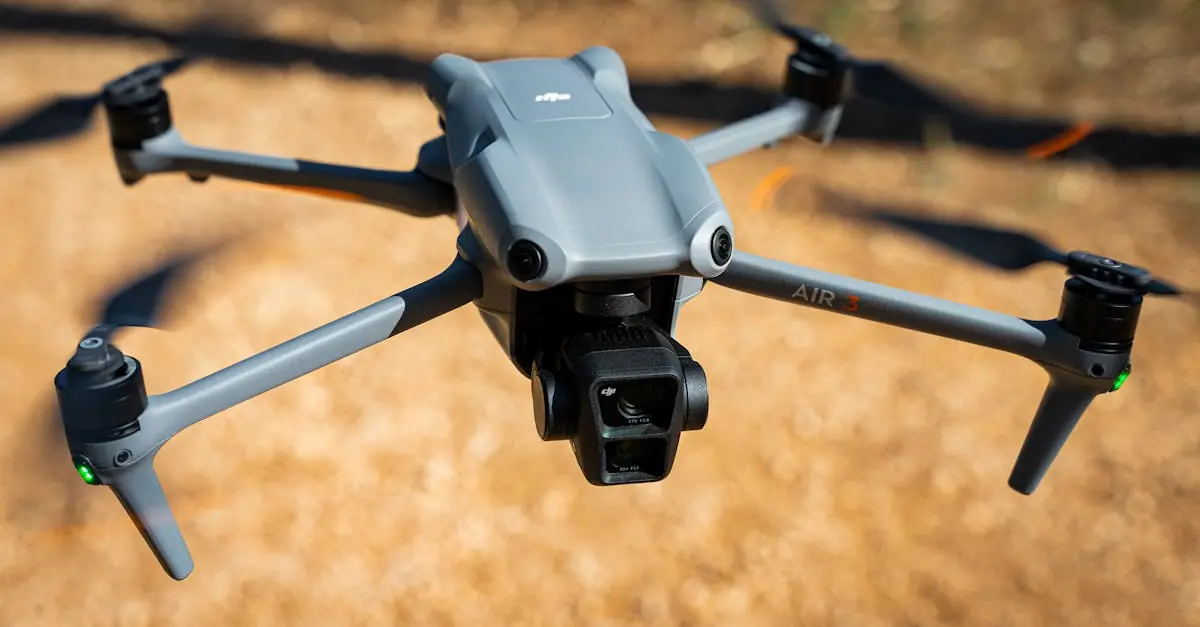Virtual reality has taken the tech world by storm, whisking users away to immersive worlds that feel almost too real. But just like a movie with a bad script, a VR experience can fall flat if the resolution isn’t up to par. Imagine trying to navigate a breathtaking landscape only to find it looks like a pixelated potato. Not exactly the adventure one hopes for, right?
Table of Contents
ToggleUnderstanding VR Resolution
VR resolution refers to the clarity and detail displayed in virtual reality environments. This metric directly influences user immersion and overall experience.
Definition of VR Resolution
VR resolution measures the number of pixels displayed across a headset’s screens. Commonly represented as width by height, it illustrates the sharpness of the visuals. For example, headsets might feature resolutions like 1920×1080 or 3840×2160 pixels. Higher pixel counts lead to clearer images, reducing the risk of seeing individual pixels, which enhances the visual appeal. Whether it’s a pixelated world or a crisp landscape, resolution significantly shapes user perception.
Importance of Resolution in VR
Resolution plays a crucial role in how users perceive virtual spaces. Low resolution can detract from realism, making environments less convincing and immersive. Clear visuals allow for better interaction with the virtual world, increasing engagement and satisfaction. In fast-paced gaming scenarios, high resolution can enhance clarity and reaction time. Moreover, studies indicate that users experience less motion sickness in higher resolution environments, promoting longer usage. Prioritizing resolution is essential for developers aiming to create high-quality virtual experiences.
Factors Affecting VR Resolution
Understanding the factors affecting VR resolution helps in optimizing virtual experiences. Display technology and graphics processing power greatly influence the clarity and detail of VR environments.
Display Technology
Display technology plays a crucial role in determining VR resolution. OLED and LCD panels are common options, each offering different levels of color accuracy and contrast. Higher refresh rates enhance smoothness while reducing motion blur. The arrangement of pixels in each display directly affects image sharpness. Moreover, dual displays in headsets typically improve depth perception and visual quality. Resolution specifications, such as 1920×1080 or 3840×2160 pixels, ensure that users encounter immersive visuals that support their experiences.
Graphics Processing Power
Graphics processing power heavily impacts the performance of VR applications. High-performance GPUs render images quickly, which improves frame rates. Frame rates above 90 fps facilitate seamless transitions, preventing distortion. Efficient rendering techniques minimize latency, enhancing responsiveness during interactions. The capability of the GPU determines how well it can handle detailed textures and complex environments in virtual settings. As developers aim for greater realism, optimizing graphics processing becomes essential to achieve higher resolutions and improve user immersion.
Comparing Different VR Resolutions
VR resolutions vary significantly across devices, impacting user experiences. Understanding these differences helps users choose the right headset for their needs.
Common VR Resolutions
Most VR headsets feature resolutions like 1080p (1920×1080) and 1440p (2560×1440). Some advanced models reach 4K (3840×2160), offering improved clarity and detail. Users often find that higher resolutions lead to more immersive experiences. Resolutions affect visual fidelity, influencing how realistic the virtual environment feels. Certain headsets, such as the Oculus Quest 2 and Valve Index, exemplify the range in available resolutions.
High-Resolution VR Headsets
High-resolution VR headsets enhance user engagement by providing stunning visuals. Devices like the HP Reverb G2 feature a resolution of 2160×2160 per eye. Other models, including the Pimax 8K X, boast resolutions up to 3840×2160 per eye. These advancements reduce the screen door effect, improving visual immersion. As a result, higher resolutions play a critical role in minimizing motion sickness and enhancing overall comfort. The trend toward higher resolutions indicates a growing demand for realistic virtual environments.
Impact of VR Resolution on User Experience
VR resolution plays a significant role in determining overall user experience. High-resolution displays enhance immersion and realism, making virtual environments feel more like reality.
Immersion and Realism
Users experience heightened immersion with higher resolutions, as more pixels create sharper and clearer visuals. Environments become richer and more detailed, allowing for a deeper emotional connection. Enhanced realism emerges from clear textures and lifelike colors, fostering a sense of presence within the virtual world. Many gamers and professionals appreciate this realism, as it transforms basic interactions into captivating experiences. Developers emphasize the importance of resolution when designing applications, aiming for designs that engage users through notable visual fidelity.
Motion Sickness and Visual Clarity
Clear visuals significantly reduce the risk of motion sickness in VR environments. Users often experience discomfort when they perceive a mismatch between their movements and pixelated graphics. A high-resolution display minimizes this disconnect, leading to smoother head movements and a more stable experience. Maintaining high frame rates also contributes to visual clarity, further enhancing comfort during longer sessions. With advancements in technology, reducing these discomforts becomes crucial for player retention and satisfaction. Developers focus on optimizing graphical output to ensure that clarity and stability coexist, creating an enjoyable user experience.
The significance of VR resolution cannot be overstated. As technology advances the demand for higher resolutions grows, enhancing the immersive experience for users. Clear visuals are essential for creating engaging environments that users can connect with emotionally.
With improvements in display technology and graphics processing, developers have the tools to push the boundaries of virtual reality. High-resolution headsets are setting new standards for clarity and realism, making VR experiences more enjoyable and comfortable.
As the industry evolves, the focus on optimizing resolution will continue to shape the future of virtual reality, ensuring that users can fully appreciate the stunning worlds created for them.

